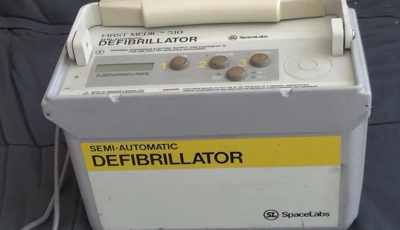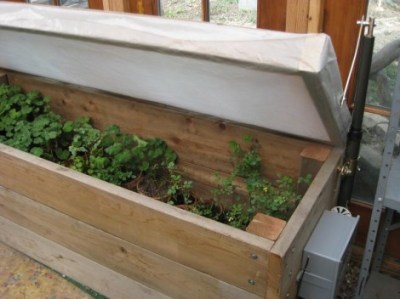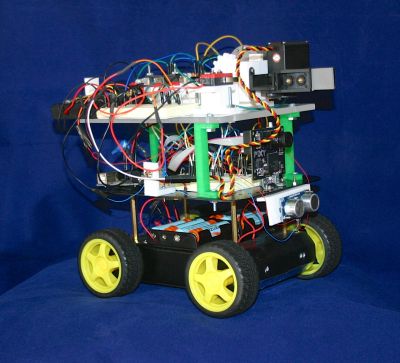Hackaday, we have a problem. 3D printing is changing the world but it’s still too expensive to be embraced as a truly transformative technology.
With each passing year, the 3D printing industry grows by leaps and bounds. Food safe PLA is now the norm, with dissolvable and other exotic filaments becoming more mainstream. New filaments are making it possible to print objects that were not possible before. New CAD software is popping up like dandelions, with each iteration giving novice users a friendly and more intuitive interface to design 3D models. As time marches on, and we look into its future, a vision of the 3D printing world is evident – its only going to get bigger.
 Imagine a future where a 3D printer is as common as an ink jet printer in homes all across the world. A future where you could buy filament from the supermarket down the street, and pick up a new printer from any hardware store. A future where dishwashers, refrigerators and bicycles come with .stl files that allow you to print upgrades or spare parts. A future where companies compete to give the market easy-to-use printers at the cheapest price.
Imagine a future where a 3D printer is as common as an ink jet printer in homes all across the world. A future where you could buy filament from the supermarket down the street, and pick up a new printer from any hardware store. A future where dishwashers, refrigerators and bicycles come with .stl files that allow you to print upgrades or spare parts. A future where companies compete to give the market easy-to-use printers at the cheapest price.
Is this future possible? Not until the technology changes. It’s too expensive, and that’s the problem you’re going to solve. How can you make a 3D printer cheaper? A cheap printer could change the game and make our future a reality.
Where do we need cost savings?
To get you going, here are some parts of common 3D Printers which think need to find cost-saving solutions.
XYZ AND HOT END MOTORS
Stepper motors are going to run you about $15 each. Is it possible to use cheaper DC motors with some type of position tracking while keeping the cost down?
HARDWARE
Threaded rod is probably the cheapest way to move your XYZ axis. What about couplings and guide rods? Check out how this guy made a CNC out of parts from his local hardware store.
ELECTRONICS
No arduino with Easysteppers here – too expensive. We’ve just seen a super cheap controller a few days ago. If we use something other than NEMA steppers, it will radically change the typical electronic controller for our super cheap 3d printer.
EXTRUDER
What is the cheapest way to melt and extrude plastic? What about using thermistors in place of thermocouples? Let’s think out of the box with this, and see if we can get away from the typical stepper motor based extruder. Remember, everything is low cost. If we have to sacrifice some resolution, that is OK.
So there you go. Let’s hear your input on the issue. We need to make 3D printers a lot more affordable and we want to hear any ideas you have on the topic in the comments below. Do you think this is in our future and why?








 It’s safe to say we’ve all seen engineering solve part of this problem already. Over the last decade, Automatic External Defibrillators have become ubiquitous. The life-saving hardware is designed to be used by non-doctors to save someone whose heart rhythms have become irregular. [Chris Nefcy] helped develop AEDs and
It’s safe to say we’ve all seen engineering solve part of this problem already. Over the last decade, Automatic External Defibrillators have become ubiquitous. The life-saving hardware is designed to be used by non-doctors to save someone whose heart rhythms have become irregular. [Chris Nefcy] helped develop AEDs and 
 The way things work right now, you go to the store and pick out a card. You write a personal message inside, lick, stamp, and send it through the mail. The thing is, this card is probably already in a store down the street from your mother. What if you could digitize your handwritten message and have it printed on the card and delivered from a local repository? Take it a step further, assuming that these cards are bulk-printed in one central location and distributed widely, does it save any resources to decentralize the production of the cards and make production local so that the finished goods are not being transported more than 500 miles? And for those skeptics saying that you can’t add a check or cash to the card when done this way… yes you can!
The way things work right now, you go to the store and pick out a card. You write a personal message inside, lick, stamp, and send it through the mail. The thing is, this card is probably already in a store down the street from your mother. What if you could digitize your handwritten message and have it printed on the card and delivered from a local repository? Take it a step further, assuming that these cards are bulk-printed in one central location and distributed widely, does it save any resources to decentralize the production of the cards and make production local so that the finished goods are not being transported more than 500 miles? And for those skeptics saying that you can’t add a check or cash to the card when done this way… yes you can! Standard practice is that the part be ordered from a parts supplier (either by you or by a serviceman). These suppliers keep a stock of common parts which are well documented in a huge library of service manuals for the myriad of home appliances out there. But when you get right down to it, it’s just a little plastic bauble. Let’s assume all of these are made in a single factory in huge production runs that supply both the manufacturer and the legacy parts houses. What if instead of this you could have these parts 3D printed by a business within 500 miles of where they are needed. There are industrial-grade 3D printing techniques that produce parts strong enough to act as a replacement. Where do you come down on resource saving between the two methods?
Standard practice is that the part be ordered from a parts supplier (either by you or by a serviceman). These suppliers keep a stock of common parts which are well documented in a huge library of service manuals for the myriad of home appliances out there. But when you get right down to it, it’s just a little plastic bauble. Let’s assume all of these are made in a single factory in huge production runs that supply both the manufacturer and the legacy parts houses. What if instead of this you could have these parts 3D printed by a business within 500 miles of where they are needed. There are industrial-grade 3D printing techniques that produce parts strong enough to act as a replacement. Where do you come down on resource saving between the two methods?
 We see it all the time around here, people are building projects to monitor and control their own gardening projects.
We see it all the time around here, people are building projects to monitor and control their own gardening projects.  Perhaps robots are an answer to a different problem.
Perhaps robots are an answer to a different problem.  Stepping back onto the side-track of changes to industrial farming, let’s take a look at one of the way-out-there-ideas from last year. A huge amount of water usage is in food production. What if we turned entire farms into greenhouses in order to capture and reuse water that is normally lost into an all-to-dry atmosphere?
Stepping back onto the side-track of changes to industrial farming, let’s take a look at one of the way-out-there-ideas from last year. A huge amount of water usage is in food production. What if we turned entire farms into greenhouses in order to capture and reuse water that is normally lost into an all-to-dry atmosphere? 
 The tough part of the problem here is getting at reliable data. Just yesterday we saw
The tough part of the problem here is getting at reliable data. Just yesterday we saw 











